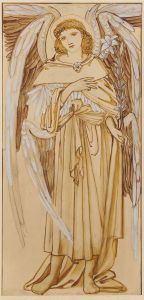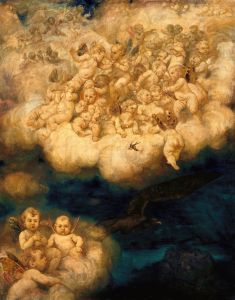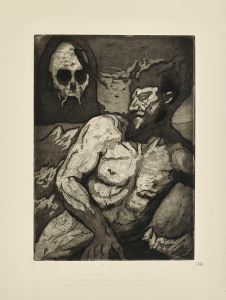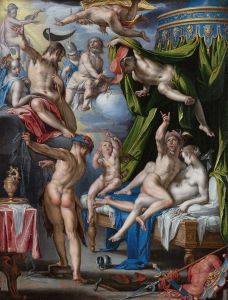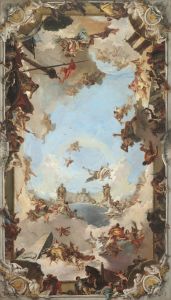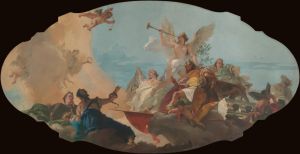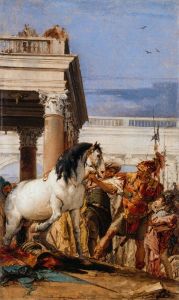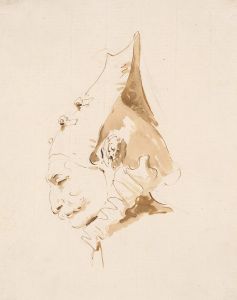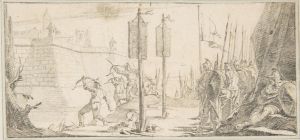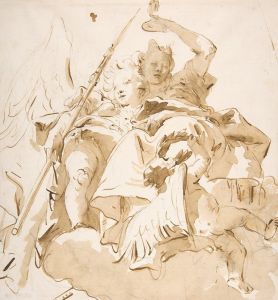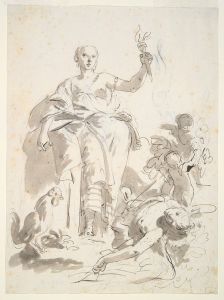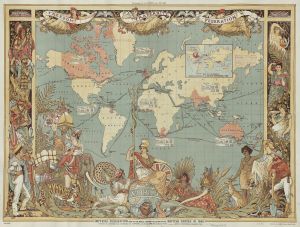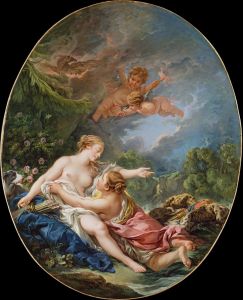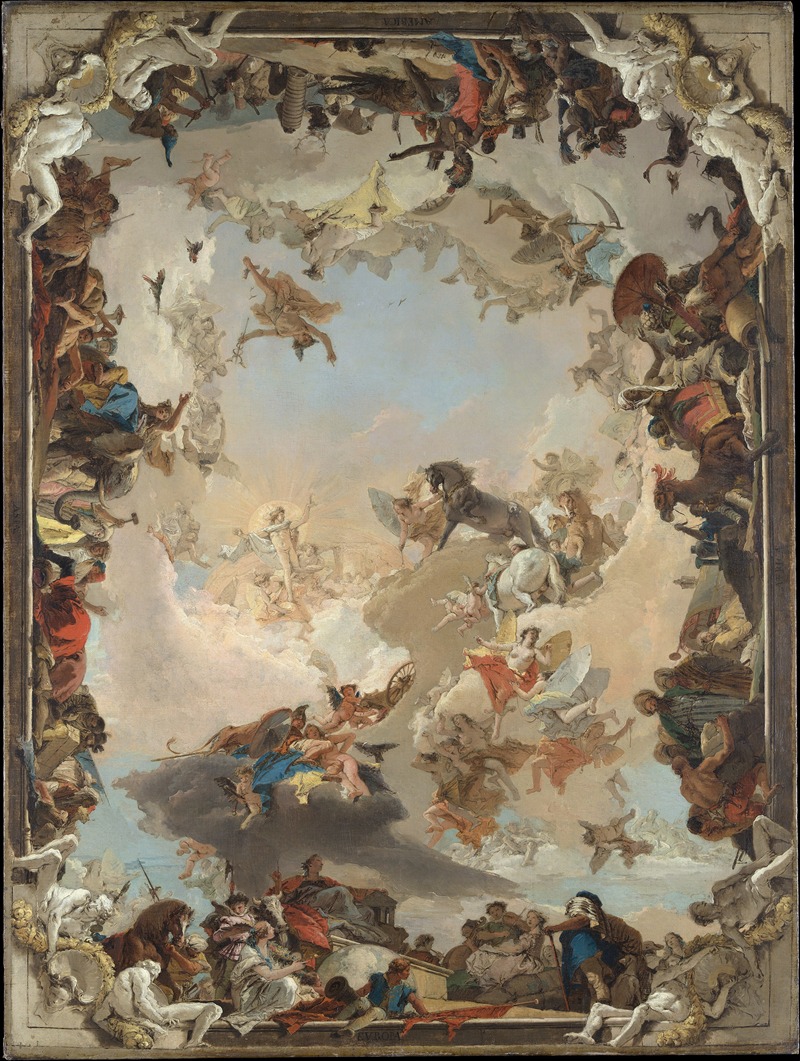
Allegory of The Planets and Continents
A hand-painted replica of Giovanni Battista Tiepolo’s masterpiece Allegory of The Planets and Continents, meticulously crafted by professional artists to capture the true essence of the original. Each piece is created with museum-quality canvas and rare mineral pigments, carefully painted by experienced artists with delicate brushstrokes and rich, layered colors to perfectly recreate the texture of the original artwork. Unlike machine-printed reproductions, this hand-painted version brings the painting to life, infused with the artist’s emotions and skill in every stroke. Whether for personal collection or home decoration, it instantly elevates the artistic atmosphere of any space.
"Allegory of the Planets and Continents" is a monumental ceiling fresco created by the renowned Italian artist Giovanni Battista Tiepolo. Completed between 1752 and 1753, this masterpiece is located in the Würzburg Residence, a UNESCO World Heritage site in Würzburg, Germany. Tiepolo, one of the most significant painters of the 18th century, was known for his vibrant use of color and dynamic compositions, and this work is a testament to his artistic prowess.
The fresco is situated in the grand staircase of the Würzburg Residence, a Baroque palace that served as the residence of the Prince-Bishops of Würzburg. The commission for the fresco was part of a larger project to decorate the palace, which was designed by the architect Balthasar Neumann. Tiepolo was invited to Würzburg by Prince-Bishop Karl Philipp von Greifenklau, who sought to enhance the prestige of his court through the arts.
"Allegory of the Planets and Continents" is an expansive work, covering an area of approximately 677 square meters, making it one of the largest frescoes in the world. The composition is a complex allegory that combines mythological and geographical themes. It features personifications of the four continents known at the time—Europe, Asia, Africa, and America—alongside representations of the planets and various mythological figures.
At the center of the fresco is Apollo, the sun god, who is depicted riding his chariot across the sky, symbolizing the passage of time and the movement of celestial bodies. Surrounding Apollo are the personifications of the planets, each accompanied by their respective mythological attributes. For instance, Venus is shown with Cupid, while Mars is depicted with armor and weapons.
The four continents are represented in the corners of the fresco, each characterized by distinctive attributes and figures that reflect contemporary European perceptions of these regions. Europe is depicted with symbols of power and wisdom, such as a crown and a book. Asia is shown with exotic animals and luxurious fabrics, highlighting the continent's perceived opulence. Africa is represented with a lion and an elephant, emphasizing the exotic wildlife associated with the continent. America is depicted with a figure wearing feathered headdresses, reflecting the European fascination with the indigenous cultures of the New World.
Tiepolo's use of foreshortening and perspective creates a sense of depth and movement, drawing viewers into the scene and enhancing the illusion of an open sky. The vibrant colors and dynamic figures exemplify Tiepolo's mastery of the fresco technique and his ability to convey complex allegorical themes with clarity and elegance.
"Allegory of the Planets and Continents" is celebrated not only for its artistic brilliance but also for its reflection of the Enlightenment ideals of the time. The fresco embodies the era's fascination with exploration, science, and the blending of mythological and geographical knowledge. Today, it remains a significant cultural and artistic treasure, attracting visitors from around the world who come to admire Tiepolo's extraordinary vision and skill.





